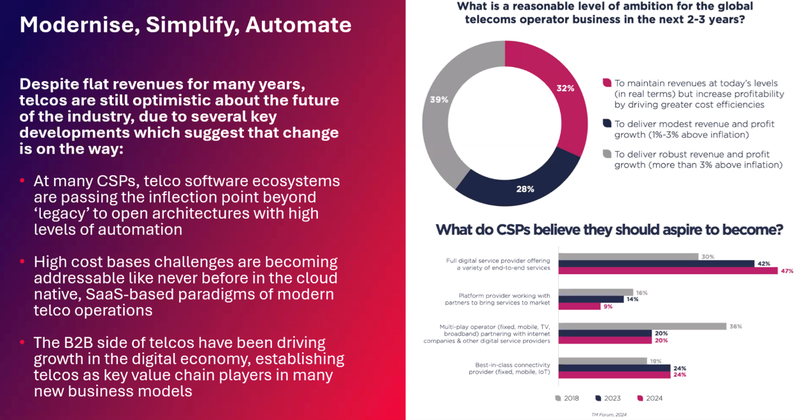Member Insights
Sara Coppo, Principal Solutions Engineer – CSPs at BMC Helix, explains how agentic AI helps CSPs embrace 5G, streamline operations, enhance customer experiences, and build intelligent self-healing networks for future telecom needs.

Delivering telecommunications of the future with agentic AI
Today’s communication service providers (CSPs) are facing an inflection point. With customers demanding more for less, greater competition from traditional and new players, and core services becoming commoditized and causing margin erosion, CSPs are looking to increase their revenue streams by launching new and innovative services and reduce costs while preparing network operations to handle even more data-intensive technologies of the future. Additionally, telecommunications companies need to deliver a differentiated customer experience with faster, easier, more personalized customer support. To do that, many leading CSP are optimizing and automating their IT operations (ITOps) with agentic AI to increase their organizations’ level of maturity in reference to the TM Forum AN (Autonomous Networks) Framework.
5G networks have revolutionized the telecommunications industry. They have also had an impact on other industries including healthcare, transportation, and manufacturing. Use cases include becoming the backbone for smart traffic systems deployed in major metropolitan areas, enabling robotic automation in manufacturing, and allowing ultra-low–latency implementations like remote surgeries and self-driving rideshare vehicles. 5G networks have also changed how CSPs need to structure their infrastructure to deliver services—from adopting cloud platforms and cloud–native technologies and new, open digital architectures to achieve the economies of scale for bandwidth–intensive use cases and faster, more reliable, redundant, and glitch–free networks.
As telecom providers support new and innovative technologies with 5G networks, customers want a frictionless, personalized experience with zero trouble, zero touch, and zero wait. To keep up, telecoms must deliver more proactive and responsive customer service, including:
Autonomous, customer-centric operations are quickly becoming the norm
The speed and methods of customer support have changed. Calling into a service center and speaking to a human (who probably needs to work with another team to resolve the issue) takes too long and is longer acceptable. Instead, today’s telecom customers expect:
Instead of inefficient, manual processes that involve form completes and emails, agentic AI can meet ITOps end users and customers where they are, delivering a single, integrated hub for all requests, and allowing engagement through platforms they’re already familiar with, like Teams, Slack, or social media channels.
For IT and network operations center (NOC) staff stuck in a “swivel chair” rut maneuvering through time-consuming, multi-system processes, agentic AI offers smart, agent-like assistants that free up staff to focus on critical, high-value tasks instead of repetitive actions.
In many current environments, collaboration is impeded by silos, with systems of record disconnected from communication channels. Agentic AI can break down these barriers by integrating systems of record with communication tools. This creates a collaborative, adaptive environment where information flows smoothly.
Another issue that could be impeding efficiency is the restriction of data analysis to a few individuals, with insights detached from IT and network operations staff, who need to wait in line to get important insights. Agentic AI democratizes data access, enabling team members to ask questions, create dashboards, and explore complex queries.
Agentic AI is ushering in a new era of automation for CSPs and building the vision of self-healing networks that can detect faults or degradations and automatically reroute traffic or initiate repairs, and trigger predictive maintenance by analyzing historical and current data[SC1] . Agentic AI is helping manage and automate the risk assessment of IT changes that helps CSPs keep up with rapid technology rollouts such as cloud services and 5G without compromising network stability. Agentic AI is enabling a sharper customer focus by automatically correlating infrastructure incidents with affected services, allowing prioritization of issues with the greatest customer impact. Additionally, agentic AI will help CSPs manage customer relationships autonomously — suggesting plans, resolving service issues, and troubleshooting devices without human agents - moving CSPs beyond connectivity into becoming intelligent service platforms.

(Image source TM Forum, 2024)